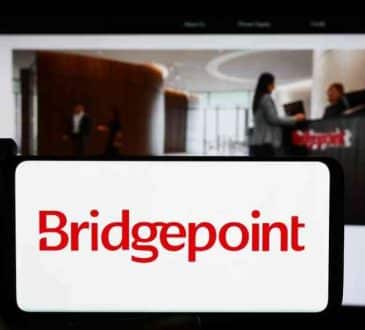5 Simple Principles That Fuel Workplace Connection—and Results

Value in business today comes from who you know and how you connect with them. These connections build whole new forms of capital—personal, social, intellectual, operational, reputational, and, of course, financial.
When we connect with people at work, we feel like “we’re in it together.” Great connection provides a sense of belonging. It puts us at ease. It helps us understand those around us and feel understood. With connection, remarkable things can happen. We engage, we’re more productive, and our businesses are more profitable.
However, when we don’t feel connected to those around us—our colleagues, managers, suppliers, and customers—we soon lose our enthusiasm. Without a strong understanding of what links us together and our place in the universe, it’s hard to see how who we are or what we do matters, and our business suffers.
How do you avoid this fate in your workplace? Start by adopting these five principles:
- Customization is king—and it’s not just for customers.
Everyone is different: from the way we interact to our preferred method of taking in information to how we respond to different management and leadership styles. Good managers strive to better understand how to relate to the individuals around them. Take notes and make note of what works (and what doesn’t) for each person on your team. - The way you connect with individuals shows how much you value them.
Traditional management thinking warns us to keep a professional distance at work, especially as managers. In keeping with this, we’ve adopted business-speak that seems designed not only to baffle and distance people from simple facts and plans but also to depersonalize discussions.
We utter, “We need to regroup” when we really mean, “Let’s get together and talk.” We tell our teams we need to “co-create and mobilize” when we want to say, “Let’s get behind this!” Be human. Be personable. Be authentic. When you start from there, connection will follow.
What kinds of conversations will help you connect? Think of it this way: if you can’t answer three out of five of the following questions about your closest workmates, colleagues, employees (or friends for that matter), then you have some work to do!
– What are their immediate family members’ names?
– What do you know about their partner or spouse? If they’re single, do they have a strong support network?
– How far do they travel to get to work, how long does the commute take, and what means of travel do they use?
– How are they faring financially? (You shouldn’t need to pry to learn this: everyday clues should let you know if people are OK or struggling.)
If they have children, what rough ages are they, do they live at home, are they stars in the community, or are they having any issues?
Unfortunately, in the typical workplace, you may find that a disappointingly low number of people can answer four out of five of these questions. We have so much coming at us, so we try to skip the small talk. But is small talk really small? Or is it a means to piece together a richer picture of the people around you? The more you learn, the more people, in turn, will learn about how much you care, improving your mutual sense of connection. - Employee relationship management is just as valuable as customer relationship management.
We prize our customer relationships, so why shouldn’t we do the same with our employees? Salespeople capture a lot more than customer contact details. Customer relationship management systems (CRMs) allow them to add notes about all aspects of the customer’s status and interests. Reminders and prompts, meanwhile, enable salespeople to pick up conversations where they last left off.
As managers, we can capture the same details and prompts about our team members to create our own ERM, our own form of employee relationship management. We’ll never again need to forget a family member’s name or an important date in a colleague’s life—the small things that can make us seem thoughtless and disconnected. Today’s smartphones make it very easy to add what you learn into the palm of your hand. - Mapping out who people are helps us see the big picture.
As you’re setting up your ERM, make your contact information dynamic. Put all the people you want to build better connections with on one page, with photos and any interesting information about them. Are they young and career-minded, starting a family, or past that stage? Include details about what they’re known for.
Then map who is in contact with whom and to what degree. Include lines to show who else should be in contact with each other ideally, too. Where do interests overlap, for instance? Make it a project, perhaps even a team project, for everyone to learn about everyone else. What better way to build engagement than to involve your people! - Use what you know to get it right, one person at a time.
Start small and build out. Learn what makes a winning strategy with one person, group, or generation, then expand and adapt these strategies for others as you gain confidence.
Take your lead from younger staff members, who tend to be instinctively well connected. This is a generation for whom nothing moves fast enough. While you may be thinking “change management,” they’re thinking “change acceleration,” so you’ll need to look for ways to manage their expectations or speed up their world at work. These team members may hotfoot it to their next job if they feel they’re in the slow lane, and that may come directly from feeling a lack of connection and engagement.
On the other hand, keep in mind that older team members may be slower to form new connections and could be more fearful of change, reinforcing the need to adapt your plan to appeal to everyone personally.
Soon after you put these ideas in place, watch the connections form and the improvements stack up.
Written by Pamela Hackett.
Add CEOWORLD magazine to your Google News feed.
Follow CEOWORLD magazine headlines on: Google News, LinkedIn, Twitter, and Facebook.
This report/news/ranking/statistics has been prepared only for general guidance on matters of interest and does not constitute professional advice. You should not act upon the information contained in this publication without obtaining specific professional advice. No representation or warranty (express or implied) is given as to the accuracy or completeness of the information contained in this publication, and, to the extent permitted by law, CEOWORLD magazine does not accept or assume any liability, responsibility or duty of care for any consequences of you or anyone else acting, or refraining to act, in reliance on the information contained in this publication or for any decision based on it.
Copyright 2024 The CEOWORLD magazine. All rights reserved. This material (and any extract from it) must not be copied, redistributed or placed on any website, without CEOWORLD magazine' prior written consent. For media queries, please contact: info@ceoworld.biz
SUBSCRIBE NEWSLETTER








